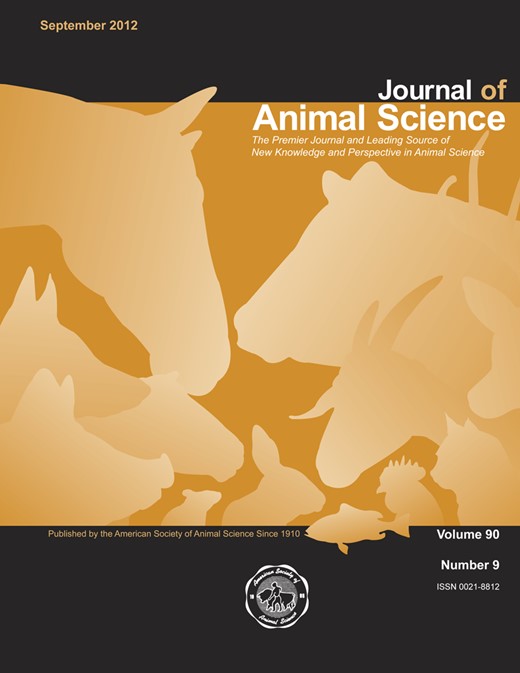-
Views
-
Cite
Cite
R. S. Fry, M. S. Ashwell, K. E. Lloyd, A. T. O'Nan, W. L. Flowers, K. R. Stewart, J. W. Spears, Amount and source of dietary copper affects small intestine morphology, duodenal lipid peroxidation, hepatic oxidative stress,and mRNA expression of hepatic copper regulatory proteins in weanling pigs,, Journal of Animal Science, Volume 90, Issue 9, September 2012, Pages 3112–3119, https://doi.org/10.2527/jas.2011-4403
Close - Share Icon Share
ABSTRACT
Thirty weanling, crossbred barrows (SUS SCROFA) were used to determine the effects of amount and source of dietary Cu on small intestinal morphology and lipid peroxidation, Cu metabolism, and mRNA expression of proteins involved in hepatic Cu homeostasis. At 21 d of age, pigs were stratified by BW (6.33 ± 0.23 kg) and allocated to 1 of the following dietary treatments: i) control (no supplemental Cu; 6.7 mg Cu/kg), ii) 225 mg supplemental Cu/kg diet from Cu sulfate (CuSO4), or iii) 225 mg supplemental Cu/kg diet from tribasic Cu chloride (TBCC). Pigs were housed 2 pigs per pen and were fed a 3-phase diet regimen until d 35 or 36 of the study. During harvest, bile and liver were obtained for mineral analysis, and liver samples were also obtained for analysis of liver glutathione (GSH) and mRNA expression of Cu regulatory proteins. Segments of duodenum, proximal jejunum, and ileum were obtained for mucosal morphology, and duodenal mucosal scrapings were collected from all pigs for analysis of malondialdehyde (MDA). Duodenal villus height was reduced in CuSO4 pigs compared with control (P = 0.001) and TBCC (P = 0.03) pigs. Villus height in the proximal jejunum of CuSO4 pigs was reduced (P= 0.03) compared with control pigs, but ileal villus height was not affected (P = 0.82) by treatment. Duodenal MDA concentrations were greater (P = 0.03) in CuSO4 pigs and tended to be greater (P = 0.10) in pigs supplemented with TBCC compared with control pigs. Liver Cu was greater (P = 0.01) in CuSO4 vs. control pigs, and tended (P = 0.07) to be greater in TBCC pigs than control pigs. Bile Cu concentrations were greater (P < 0.001) in CuSO4 and TBCC pigs vs. controls and were also greater (P = 0.04) in TBCC vs. CuSO4 pigs. Total liver GSH concentrations were less (P = 0.02) in pigs fed diets supplemented with CuSO4 vs. pigs fed control diets but total liver GSH did not differ (P = 0.11) between control and TBCC pigs. Hepatic mRNA of cytochrome c oxidase assembly protein 17 was less (P = 0.01) in CuSO4 and tended to be less (P = 0.08) in TBCC pigs vs. control pigs. Expression of antioxidant 1 mRNA was greater (P = 0.04) in TBCC pigs and tended to be greater (P = 0.06) in CuSO4 pigs compared with control pigs. Results of this study indicated that, when fed at 225 mg Cu/kg diet, TBCC may cause less oxidative stress in the duodenum than CuSO4. Feeding weanling pigs increased Cu resulted in modulation of certain Cu transporters and chaperones at the transcription level.





